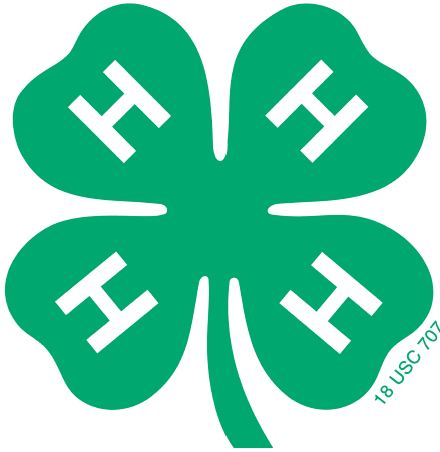What is 4-H?
4-H is the youth development education program of Washington State University Extension, which is conducted jointly by the U.S. Department of Agriculture, your state land grant university (WSU) and your Snohomish County Government. Today 4-H is everywhere–in cities, suburbs, small towns, and rural communities. 4-H is the largest youth development organization in the nation. The United States has more than 6 million members and 600,000 leaders. Around the world, 4-H type clubs now exist in at least 82 countries. In the 21st century, 4-H serves a broad clientele with expanded program focus using a variety of ways to deliver its effective “learn by doing” approach.
4‑H programs are grounded in the belief that kids learn best by doing. Kids complete hands-on projects in areas like science, health, agriculture and citizenship, in a positive environment where they receive guidance from adult mentors and are encouraged to take on proactive leadership roles. Kids can concentrate on one focus area or they can try a variety of programs throughout their 4‑H experience.
Regardless of the project area, all 4‑H programs include mentoring and career readiness as core elements.
4‑H programs are available in every county and parish in the US. Your local 4‑H office is your best resource to find out which programs are available in your area and how you can enroll your child.
4-H is a global network of youth organizations whose mission is “engaging youth to reach their fullest potential while advancing the field of youth development”.
Motto: “To make the best better.”
Founder: A. B. Graham
Founded: 1902, Clark County, Ohio, OH
Headquarters: Chevy Chase CEO: Jennifer Sirangelo (Jan 1, 2014–)
CEO: Jennifer Sirangelo (Jan 1, 2014–)
What Youth Learn in 4-H:
- Leadership
- Friendship skills
- Citizenship & Service
- Responsibility
- Public speaking
- Record keeping
- Goal setting
- Budgeting
- Life skills
The Essential Elements of 4-H Youth Development
4-H is designed to engage youth in learning opportunities that promote positive youth development. In 4-H, the critical components of a successful learning experience are a sense of Belonging, Independence, Mastery, and Generosity.
Belonging
Youth need to know they are cared about by others and feel a sense of connection to others in the group. It is important to provide youth the opportunity to feel physically and emotionally safe while actively participating in a group. Create a safe and inclusive environment and foster a positive relationship with youth learners.
Independence
Youth need to know that they are able to influence people and events through decision-making and action. They learn to better understand themselves and become independent thinkers. Youth begin to understand that they are able to act as change agents with confidence and competence as a result of their learning.
Mastery
In order to develop self-confidence youth need to feel and believe they are capable and they must experience success at solving problems and meeting challenges. Youth need a breadth and depth of topics that allow them to pursue their own interests. Introduce youth to expert knowledge and guide them toward their own sense of mastery and accomplishment.
Generosity
Youth need to feel their lives have meaning and purpose. Youth are encouraged to broaden their perspectives, find relevance in the topic area and bring ideas back to their community.
Adapted from 4-H Essential Elements of 4-H Youth Development, Dr. Cathann Kress, 2004.
